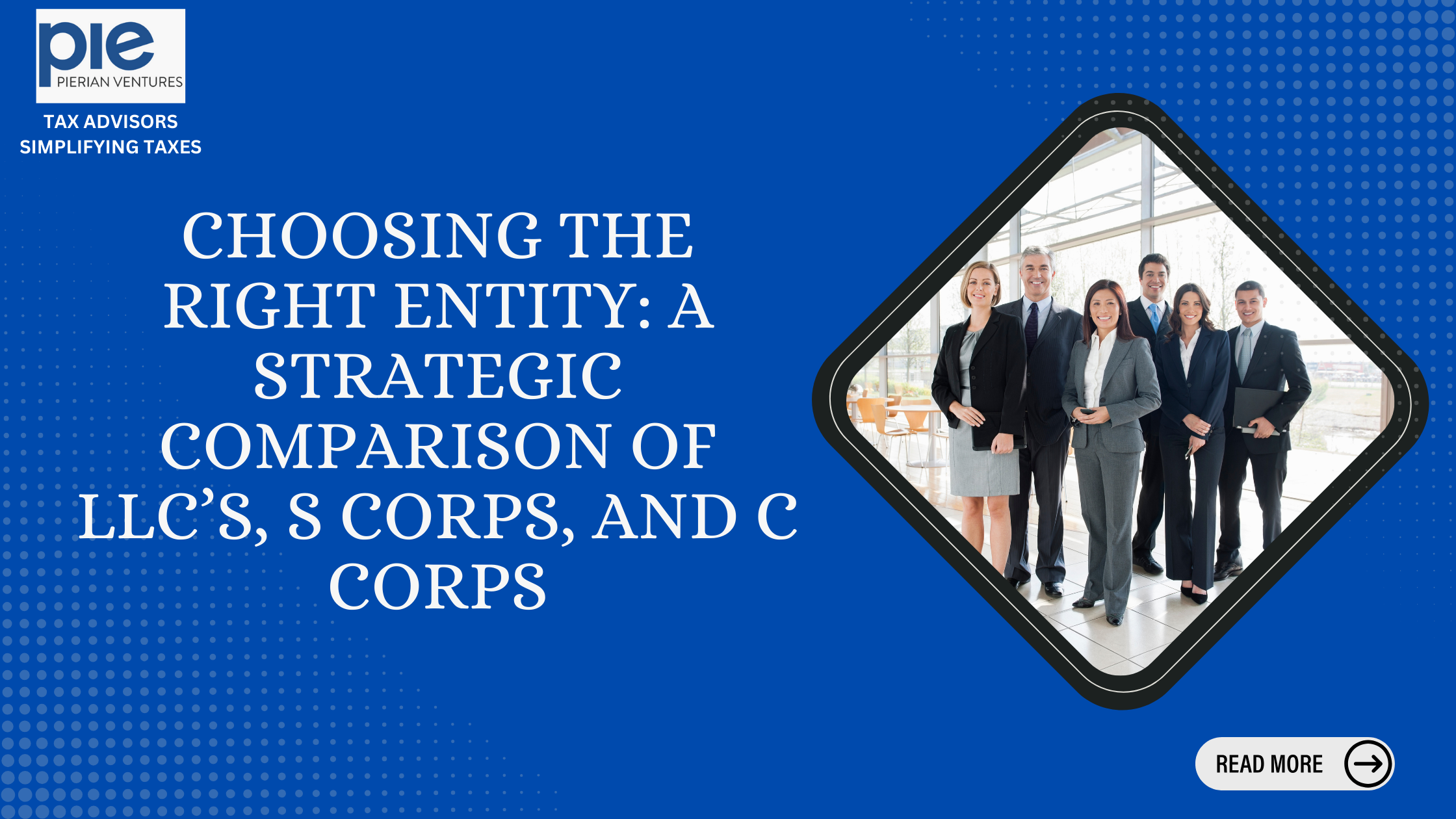In the world of U.S. corporate taxation, C Corporations occupy a unique space — one that offers both advantages and challenges for business owners. Unlike pass-through entities such as S Corporations and partnerships, a C Corporation is taxed as a separate legal entity, creating a distinct set of tax rules and compliance requirements that must be carefully managed.
This guide unpacks the intricate taxation framework governing C Corporations under U.S. federal law, providing business owners with a deeper understanding of the obligations, opportunities, and risks tied to this corporate structure.
Understanding the C Corporation Tax Structure
A C Corporation is treated as a separate tax-paying entity under Subchapter C of the Internal Revenue Code, meaning it is responsible for reporting its own income and paying taxes independently from its shareholders.
Key Features:
- The corporation files its own federal tax return.
- Owners are taxed again on dividends or distributions, creating what’s commonly known as double taxation.
- Losses at the corporate level do not pass through to the shareholders’ personal tax returns.
What makes the C Corporation structure valuable for larger or growing businesses is the ability to reinvest earnings, attract investors, and operate with fewer restrictions on ownership compared to other business types.
Business Expenses and Deductions
C Corporations are allowed to deduct a wide range of ordinary and necessary business expenses when calculating taxable income. These commonly cover expenses such as business operations, staff wages, advertising costs, office rent, and fees for professional services.
In addition:
- Certain capital costs must be capitalized and included in inventory or depreciated over time, under rules like IRC §263A.
- Interest on corporate debt is generally deductible, which can provide financing advantages over equity.
- Compensation paid to shareholders who are also employees must be reasonable, as excessive payments can be reclassified by the IRS.
Properly managing deductions is essential for controlling taxable income and ensuring regulatory compliance.
Double Taxation and Distribution Planning
One of the more complex areas in C Corporation taxation is the treatment of dividends and other distributions to shareholders. Because the corporation is taxed independently of its shareholders, any profits paid out as dividends are subject to taxation again at the individual level.
In addition to formal dividends, certain transactions may be treated as constructive dividends by the IRS — including personal benefits, loans, or excessive compensation provided to shareholder-employees. This can lead to unintended tax consequences if not handled carefully.
C Corporations can manage this by:
- Structuring compensation packages thoughtfully.
- Reinvesting profits in business operations.
- Declaring dividends strategically, based on long-term tax planning.
Retained Earnings and Accumulation Limits
While retaining profits within the corporation can be a smart growth strategy, U.S. tax law limits how much earnings a company can accumulate without a specific business reason.
If a corporation retains too much income without clear operational or investment plans, it may be subject to the Accumulated Earnings Tax (AET). To avoid this, businesses should:
- Maintain formal documentation of business expansion plans.
- Regularly review financial policies and dividend practices.
- Consult tax professionals to align their earnings strategies with IRS requirements.
Corporate Losses and Carryovers
When corporations incur financial losses, they can often apply those losses to reduce taxable income in upcoming years. While recent tax reforms have adjusted the timing and limitations of these Net Operating Loss (NOL) carryforwards, they remain a valuable tool for stabilizing tax obligations over time.
Effective use of losses requires:
- Timely and accurate reporting.
- Proper categorization of deductions.
- Strategic financial planning to align losses with expected future profits.
Intercompany Transactions and Ownership Structures
C Corporations often operate within complex ownership networks, including controlled groups or affiliated entities. These relationships introduce additional tax rules that affect deductions, income reporting, and intercompany transactions.
The IRS requires that financial dealings between related entities follow arm’s-length principles, meaning they must reflect fair market values similar to those between unrelated parties. Failing to comply can lead to adjustments and penalties.
Key considerations include:
- Developing transfer pricing strategies for goods, services, and intangible assets.
- Monitoring consolidated tax reporting obligations.
- Coordinating intercompany loans and dividends.
International Operations and U.S. Tax Law
For corporations with international subsidiaries or activities, U.S. tax law has specific provisions to prevent income shifting and tax avoidance. Modern rules focus on regulating foreign income inclusions, intercompany payments, and base erosion practices.
Important areas of compliance involve:
- GILTI (Global Intangible Low-Taxed Income) inclusion rules.
- Limitations on deductible payments to foreign affiliates.
- Transfer pricing rules for cross-border transactions.
- Effective application of international tax agreements and foreign tax credits.
Operating internationally adds complexity, but with informed planning, it can create opportunities for tax efficiency and market expansion.
Fiscal Year and Income Timing Strategies
Unlike pass-through entities, C Corporations can generally choose their fiscal year, allowing for income and expense timing flexibility. This can be used to:
- Align tax reporting with operational cycles.
- Manage bonus accruals and year-end expenses.
- Strategically defer or accelerate income and deductions.
Adopting a fiscal year requires careful coordination with tax advisors to ensure regulatory alignment and reporting consistency.
Compliance, Reporting, and IRS Scrutiny
C Corporations are subject to detailed reporting requirements, including federal corporate tax returns, information returns for certain transactions, and documentation supporting deductions, credits, and financial decisions.
The IRS closely monitors:
- Related-party transactions.
- Excessive accumulations of earnings.
- Compensation structures for shareholder-employees.
- Use of corporate assets for personal benefit.
Regular financial reviews, tax planning updates, and legal compliance audits can help reduce risks and protect the corporation’s tax position.
Conclusion
Taxation for C Corporations in the U.S. involves far more than just paying tax on profits. It’s a system built on layers of deductions, compliance rules, distribution planning, and ownership structures — each carrying important tax implications.
For business owners, understanding these principles is key to using a C Corporation effectively. By planning strategically, documenting business decisions, and working closely with experienced tax professionals, corporations can navigate complex tax landscapes while preserving flexibility for growth, reinvestment, and profitability.
At Pierian Ventures, we assist growing businesses and corporate leaders in structuring operations for tax efficiency, compliance, and long-term success. Connect with our corporate advisory team to explore how your C Corporation can take full advantage of today’s evolving tax environment.













